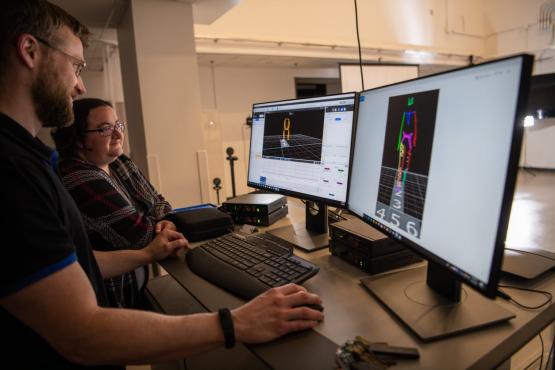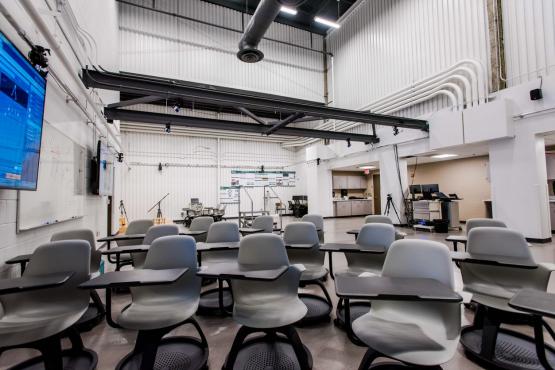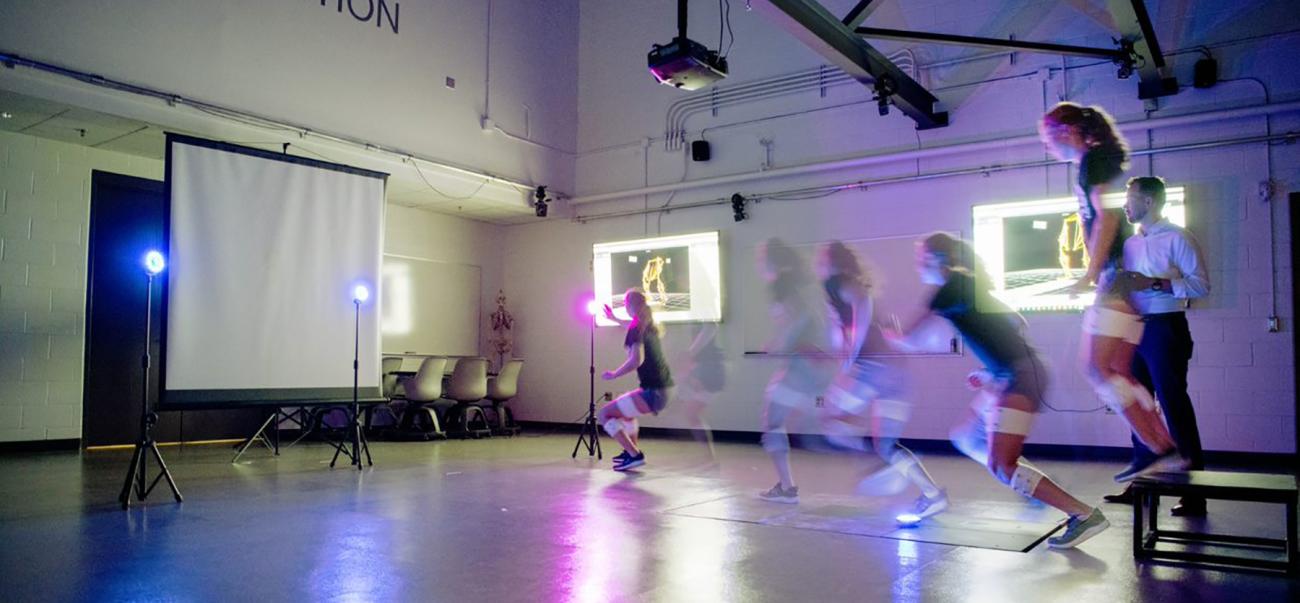
Neuromuscular Biomechanics and Health Assessment Laboratory
The overall goal of the Neuromuscular Biomechanics and Health Assessment Laboratory's (NMBHAL) research is focused on identifying mechanisms, risk factors and preventive solutions for musculoskeletal injury, with an emphasis on the lower extremity.
The laboratory maintains programmatic efforts in three focused areas:
- Neuroplasticity of musculoskeletal injury and motor control
- Neuromuscular control and intervention development
- Injury prevention and outcomes.
These areas function synergistically with the neuroimaging work being the foundation and driver of the other two foci, as it provides mechanistic knowledge to develop new interventions that are in turn tested with assessment of neuromuscular control via biomechanics. The applied clinical arm of the lab represents the final stage of this process with direct pragmatic benefit to the clinical community.
The neuroimaging research laboratory has an ongoing partnership with a local hospital organization (Holzer) for research access to a 3T MRI for functional neuroimaging studies (Philips Achieva 3 Tesla MRI scanner). Neuroimaging data processing and analysis is available on several high-powered computers with advanced neuroimaging analysis packages including but not limited to: Statistical Parametric Mapping (SPM) software, FMRIB Software Library (FSL) and functional connectivity toolbox (CONN) available.


The biomechanics laboratory comprises over 1500 square feet of state-of-the-art research equipment for testing and screening individuals of all ages and skill levels. This facility is designed for motion analysis of sports and daily activities with 16 cameras and three in ground force plates. It includes a 15'x15' open space with a passive optical motion capture system to allow natural walking, running and jumping.
The motor control lab is designed for study of human motion with a 12 camera Vicon 3D kinematic system, 2 embedded force plates, diagnostic ultrasound, and a 16-channel Delsys Trigno wireless EMG system.
Join the NMBHA Laboratory
Interested in joining the laboratory? We are always seeking highly talented, extremely motivated, and serious scientists to join on team. For doctoral and post-doctoral trainees the expectation is a demonstrated track record of success and prior formal training in sports medicine, neuroscience, biomedical engineering, biomechanics, or related fields.
We have similar expectations for undergraduate students, and undergraduate students are expected to be available for at least 10 hours/week for a minimum of one full year. For more information, contact Dr. Grooms at groomsd@ohio.edu or Dr. Simon at simonj1@ohio.edu.
